As Easter approaches, Australian Wildlife Conservancy (AWC) has revealed that reintroduced populations of the Bilby, Australia’s home-grown alternative to the Easter Bunny, have steadily grown over the last decade inside fenced feral predator-free safe havens.
Results from routine AWC surveys confirm that Bilby populations at five protected sites have steadily increased over the past decade, evidence that these rewilding projects are effectively protecting some of Australia’s most vulnerable species from extinction.
While once widespread across much of arid Australia, the Bilby population crashed following European colonisation, due largely to the impact of introduced predators such as feral cats and foxes. Today, the total population is estimated at fewer than 10,000 individuals, and the Bilby is among Australia’s long list of 86 mammals threatened with extinction.
With funding from generous donors, AWC now protects almost 10 percent of the remaining Bilby population at five significant feral predator-free sites where wild populations have been successfully re-established. The AWC sanctuaries – Scotia (NSW), Yookamurra (SA), and Mt Gibson (WA), as well as two NSW government partnership projects in the Pilliga and at Mallee Cliffs National Park, all lie within the regions where Bilbies once thrived but are now locally-extinct.
Mallee Cliffs National Park is the newest Bilby reintroduction site, with 50 Bilbies released in October 2019 as founders of a new population. Within six months of the initial release, numbers had grown by 50 percent with 26 new Bilbies recorded in the sanctuary. The population continued to grow with a total of 78 individuals including 21 new arrivals captured 9-months after release. As the first anniversary rolled around in October 2020, AWC scientists recorded that Mallee Cliffs’ Bilby population had more than doubled, with an estimated population of over 100 individuals 12 months after the initial release.
“Within a year, we’ve established a thriving population of Bilbies and their numbers are growing steadily. Our success with this project is due to the feral predator-free environment we have created here,” said Dr Laurence Berry, the AWC Senior Wildlife Ecologist overseeing the work at Mallee Cliffs. “Relatively good condition across the region over the last 12 months have encouraged breeding in the population.”
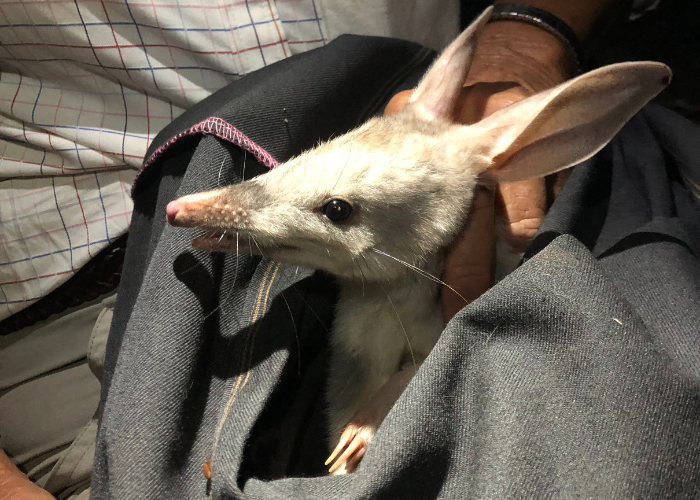 Sabrina Carter/AWC
Sabrina Carter/AWC
A similar story has emerged at AWC’s project in the Pilliga, which is also managed under an historic partnership with NSW National Parks and Wildlife Service as part of the NSW Government’s Saving Our Species program. Bilbies were reintroduced to the site in November 2018 with a founding population of 60 individuals. Over 24 months, the number of Bilbies has remained steady with a conservative estimated population of 60 in December 2020. This represents a major milestone for sustaining the species that, prior to this reintroduction, had been absent from NSW national parks for more than a century.
Sabrina Carter, AWC Senior Field Ecologist, expects the number of Bilbies to grow ahead of the next survey in April thanks to consistent rain last year and over the summer. She explained that the ideal time for Bilbies to breed is after rainfall when there is fresh food and water.
“Five of the 14 females surveyed in December 2020 had pouch young, and multiple instances of twins. We also had four adult females with extended lactating teats, indicating that they had recently had young. They’re in great health and combine that with continuing rain, we’re expecting the population to keep growing over 2021,” Carter said.
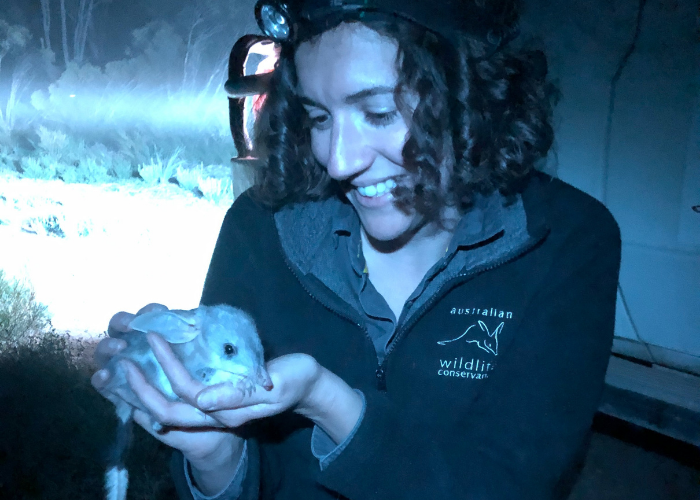 Andrew Harvey/AWC
Andrew Harvey/AWC
AWC’s initial Bilby reintroduction site at Scotia Wildlife Sanctuary started with 334 founders in June 2010. Ecologists recorded an incredible 264 percent increase in the species’ population by February 2015 when the estimate reached 1,217 individuals.
The figure remained over 1,000 until 2019 when NSW’s severe drought caused numbers to decline. Bilby populations, like that of many other Australian marsupials, experience dramatic boom and bust cycles: booming when environmental conditions are good and food resources are plentiful and busting during times of drought and scarcity. With the most recent drought at Scotia being the driest on record, the number of Bilbies within the sanctuary decline to around 150 animals in May 2020. Recent rain however has seen the Bilbies rebounding rapidly with the favourable conditions, Higher rainfall throughout 2020 has seen their numbers recover to an estimated 300 during the most recent survey.
“We’re really excited to see that their numbers have bounced back,” said Tali Moyle, AWC Wildlife Ecologist. “We see them everywhere and are tripping over their holes all the time. There are also a lot of young ones running around which is very promising.”
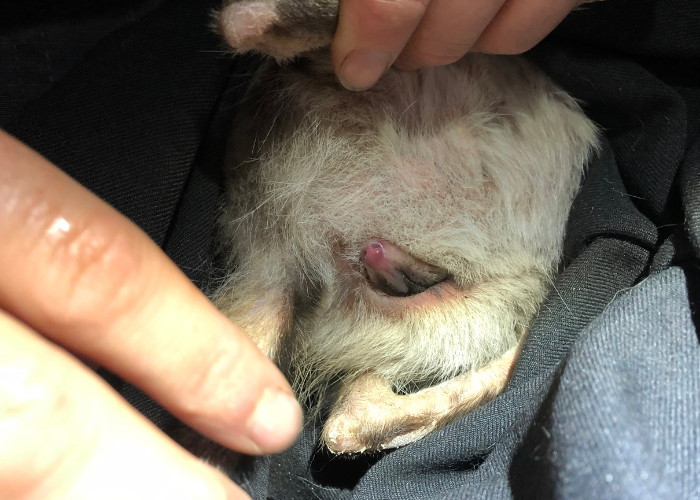 Sabrina Carter/AWC
Sabrina Carter/AWC
Bilbies are also currently on a boom cycle at Yookamurra Wildlife Sanctuary in South Australia. The species was first reintroduced to the site in 1996 by Earth Sanctuary Ltd. as part of a breeding program. AWC acquired the property in 2002 and upgraded the predator-proof fence to establish a 1,100 hectares feral predator-free area. Bilbies were successfully released into this wider area in 2007 and again in 2011 when the breeding program was disbanded.
Spotlight surveys were introduced at Yookamurra in 2015 to monitor the population which can fluctuate greatly between seasons. The first survey in March 2015 estimated 81 Bilbies lived in the area, a figure that grew to 137 by March 2017. Due to drought, the population experienced a bust cycle throughout 2020 that saw estimates drop to around 49 in March 2020 and 19 in September 2020. However, record rain in the same year resulted in growth for 2021 with an estimation of 83 Bilbies at Yookamurra as of March 2021.
Helen Crisp, AWC Regional Ecologist, said it was encouraging to see Bilby juveniles and sub-adults running around the sanctuary again this year.
“It’s really exciting and positive to see a return in Bilby numbers and believe it’s in direct response to the really good winter rain we had in 2020,” Crisp said. “It was the best winter rain we’ve had in four years and we experienced the wettest August in a decade.”
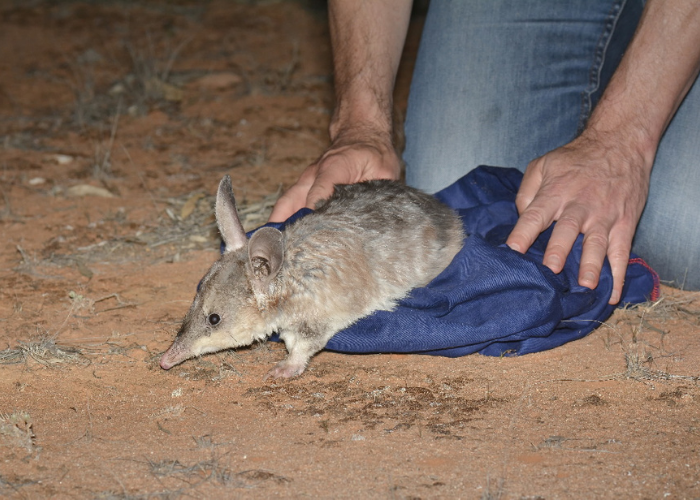 Wayne Lawler/AWC
Wayne Lawler/AWC
Mt Gibson Wildlife Sanctuary became part of the fight to conserve the iconic Australian mammal in 2016. Between 2016-2018, there were 56 Bilbies translocated from a number of sources to Mt Gibson including AWC’s Scotia and Yookamurra sanctuaries.
Although tracking the nocturnal species at Mt Gibson has proved challenging, Georgia Volck, AWC Field Ecologist said there is encouraging evidence of the Bilby population growing and breeding from camera traps which are distributed throughout the feral predator-free area. The team had 130 detections of Bilbies at 59 camera sites and captured images of sub-adult bilbies, juveniles and females with pouch young.
“Every year the occupancy of Bilbies has increased, as has their dispersal away from release site areas,” Volck said. “We are currently working on a methodology that will allow us to extract DNA from bilby scat that should allow us to generate a robust population estimate.”
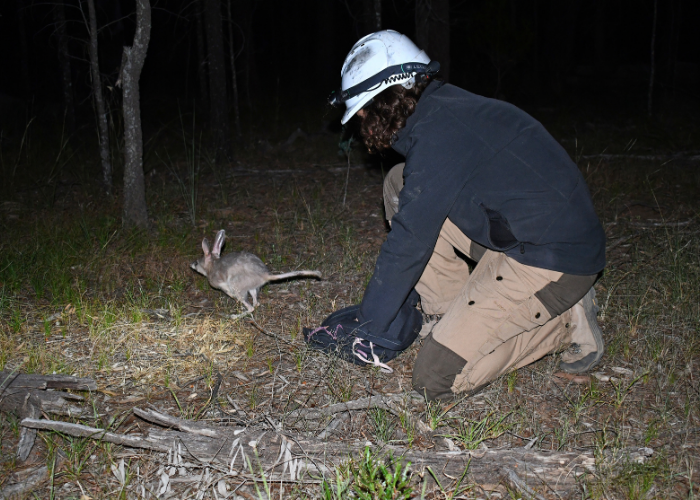 David Rudder/AWC
David Rudder/AWC
Building on AWC’s successful Bilby reintroductions in feral predator-free fenced areas, the non-profit plans to establish a new population of Bilbies at Newhaven Wildlife Sanctuary in 2021 as part of its program to restore up to ten nationally threatened species that have disappeared from central Australia.
Within a decade, AWC properties are expected to protect an estimated 5,000 Bilbies, representing a major boost to the species.
For more information on the work being undertaken to restore populations of vulnerable Bilbies around Australia or to support AWC’s work, click here.
Australia’s wildlife needs our help now more than ever. Thank you for your support, which is enabling AWC to restore populations of native animals around Australia.
Support effective Bilby conservation this Easter